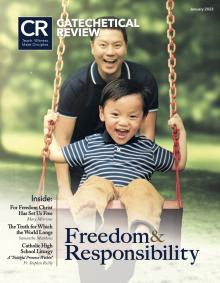In 1947, Pope Pius XII launched (what we would call today) a “new evangelization” of the Catholic Church in his great encyclical letter Mediator Dei.[i] Seen as the Magna Carta of the modern liturgical movement, the Pope sought to use that movement as the principal means for the adaptation of the Church to a radically and rapidly changing world. After two catastrophic world wars, 1914–1918 and 1939–1945, the Church could not simply ignore the fact that the world had dramatically changed and that the Church needed to adjust accordingly.
Renewing the Liturgy
It was, therefore, necessary for the Church to ensure that its spiritual relevance continued to permeate all of modern social life. For the Holy Father, it was the Liturgy that would have the greatest transformative power upon the world in this time of great need because it is the Liturgy that bears the greatest public witness to the faith of the Church.
[i] Pius XII, Mediator Dei.
The rest of this online article is available for current Guild members.
This article is from The Catechetical Review (Online Edition ISSN 2379-6324) and may be copied for catechetical purposes only. It may not be reprinted in another published work without the permission of The Catechetical Review by contacting [email protected]

















